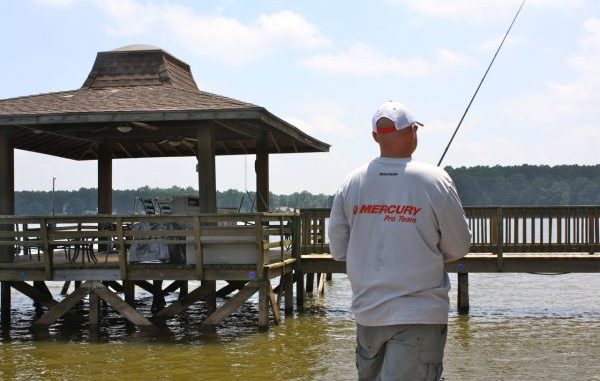
Those near fish highways will always outproduce those off the beaten path
Each year, Mr. Y sweetens his pier like a professional gardener. He strategically sinks around it brush treated with fish attractants, thins the brush out to limit snags, and leaves pockets within the vegetation to dunk his minnows and jigs.
He’s rewarded with a scant number of puny crappie.
At the same time, less than 50 yards away his neighbor, Mr. Z, waddles down to his pier, plunks his posterior in an easy chair and catches crappie after crappie.
Mr. Y shakes his head and wonders why.
If Mr. Y would think of his pier and his neighbor’s pier as two stops along an underwater highway system, he would know why Mr. Z’s pier is better than his pier.
Just as most cars travel along interstate highways to reach their destination, most fish use underwater highways in the form of points, creek channels and lake-bottom irregularities to get where they’re going.
The heavy traffic along a major highway encourages stops along the route in the form of malls, gas stations, rest rooms, and eateries. Similarly, fish migrating along underwater highways have stops along the way, such as rocks, stumps, brush, shad-infested eateries and piers.
Secondary roads on land or beneath the water can’t match the heavy traffic flow on highways, nor will their stops on route attract the same number of travelers.
Unfortunately for Mr. Y, his pier is off the beaten path, despite being a short distance from Mr. Z’s pier. Mr Z’s pier is located along an underwater highway used by most fish.
When fish are prompted to migrate to the shallows, more of them will take the main-traveled road to Mr. Z’s pier rather than the out-of the-way road to Mr. Y’s pier.
By sweetening his pier, Mr. Y might attract a few more fish, but his pier will never hold as many fish as his neighbor’s.
Mr. Z should take care not to ruin the fishing at his pier. Should Mr. Z do any landscaping that affects the underwater highway near his pier, the fish might seek an alternate route, just as travelers look for alternate routes to avoid road construction.
While fishermen confined to one pier can only hope their dock is like Mr. Z’s, anglers in boats can take away a message from this case study.
To wit: Locating brush piles is not necessarily a formula for success. Locating the right brush piles — those along main travel routes — is the key that can quickly fill limits.


